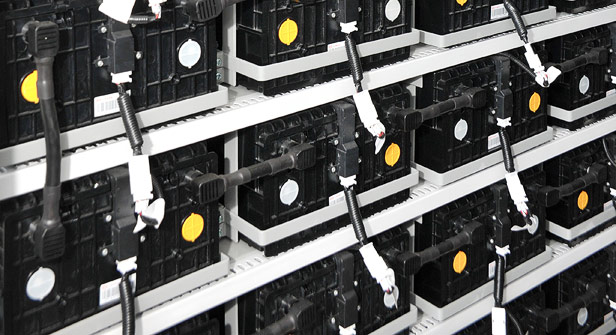A recently completed distributed energy project at the large, 4,000-inmate Santa Rita Jail in Alameda County, California, ties together power from fuel cells, solar panels, wind turbines, and diesel generators—all located at the jail—to form a microgrid that can operate independently of large, centralized power plants. The system keeps the power on when storms take down the grid, which is essential for safety at the maximum security facility, and it’s saving the jail about $100,000 a year.
The jail microgrid is one of the largest and most advanced in the United States. It’s the latest example of an emerging smart-grid technology that’s providing a cleaner, more reliable, and, in some parts of the country, significantly cheaper alternative to the conventional grid. “In many cases, it has a very nice payback, with or without subsidies,” says Michael Clark, president of Fort Collins, Colorado-based Encorp, which recently installed the software and equipment needed to manage the jail’s microgrid. Microgrids also provide new ways to use solar and wind power. Ordinarily, the intermittent nature of such power sources makes them a challenge for utilities. By integrating them with batteries and other sources of power, they can provide a reliable boost to conventional power supplies to help utilities meet peaks in demand.
Microgrids are a step beyond either emergency backup systems or stand-alone solar-panel arrays. They use special software and power electronics to integrate multiple sources of power and energy storage to provide electricity around the clock, even when the sun isn’t shining or regulations limit the use of diesel generators. In the case of the system at the jail, Encorp has installed networked controllers—the size of large computers—at each source of electricity, including a large array of thousands of batteries, as well as at the point where the jail connects to the grid. Coordinating power from diesel generators, solar panels, and other sources of power also requires equipment that can adjust the frequency and voltage of the power they produce.
Don’t settle for half the story.
Get paywall-free access to technology news for the here and now.
